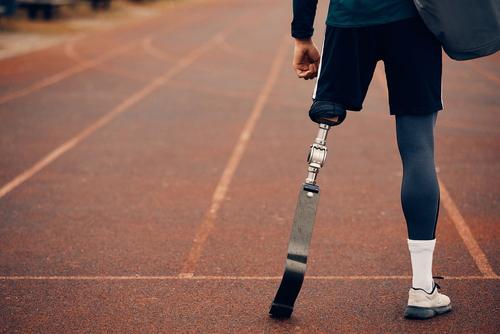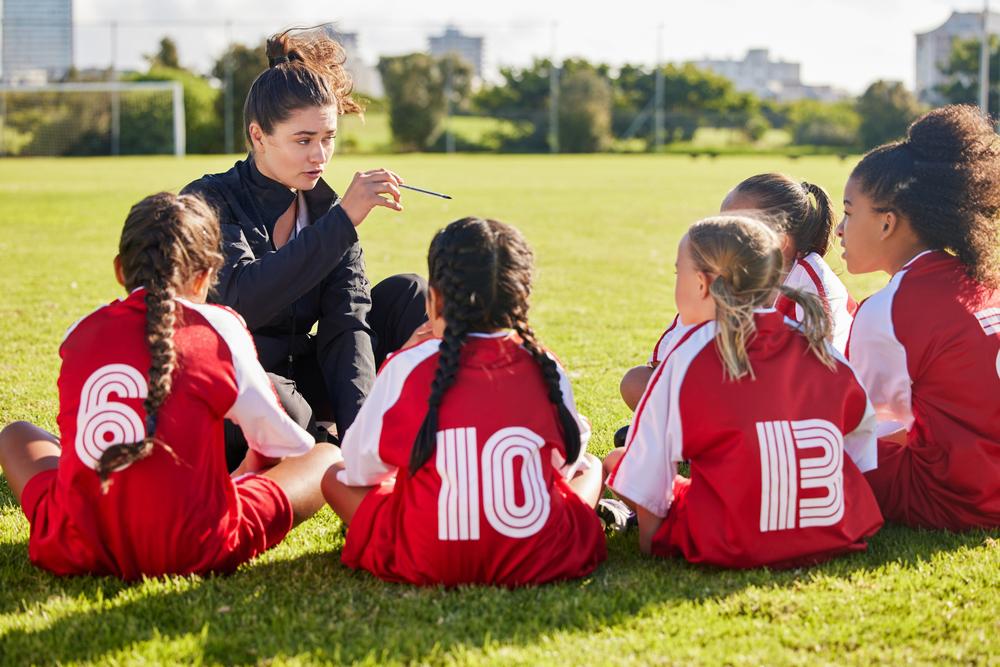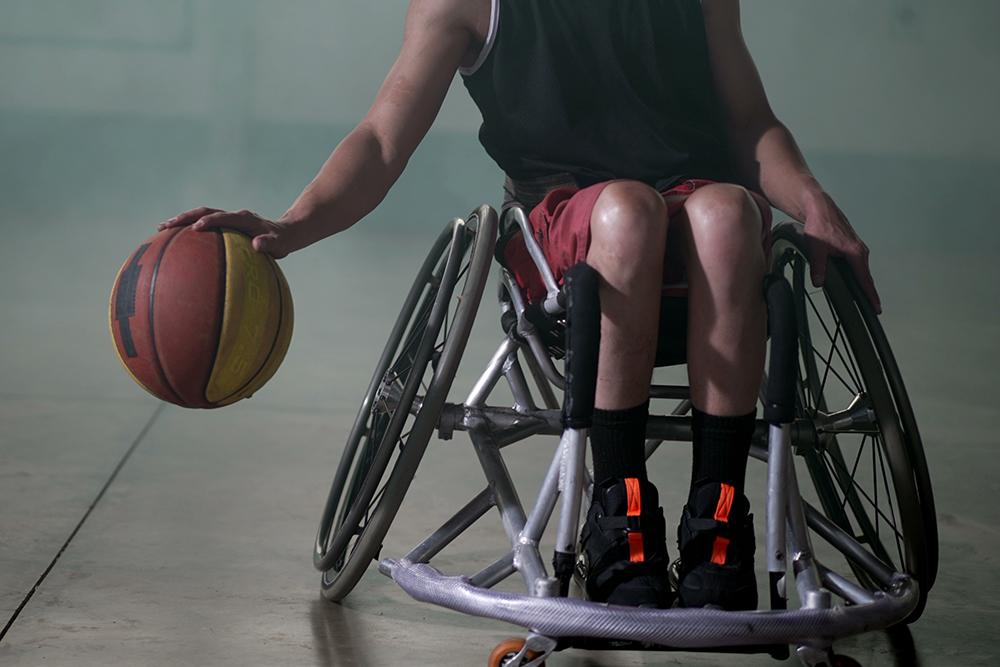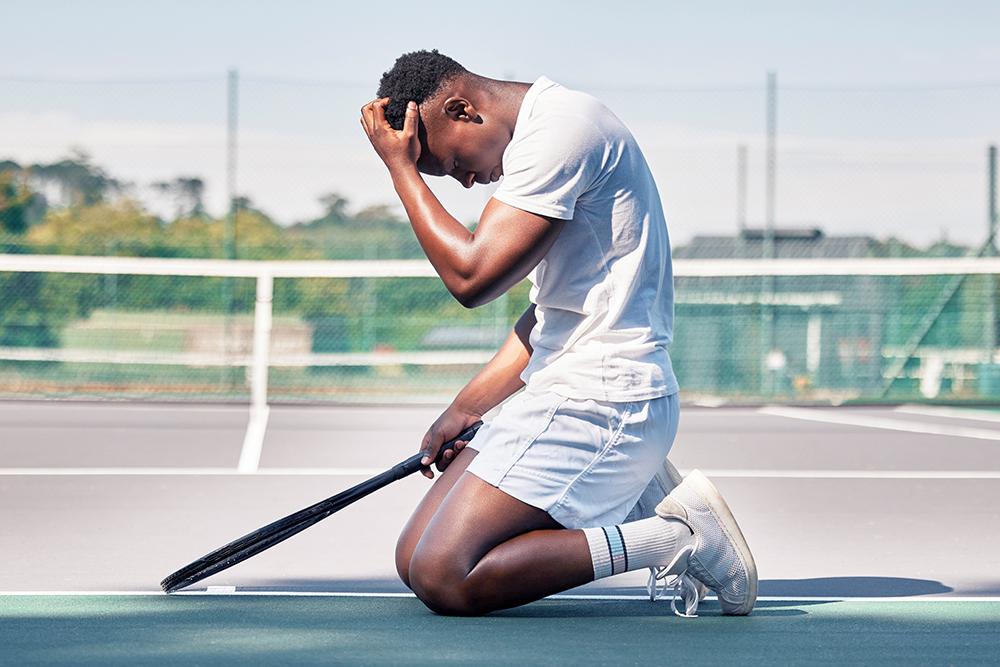 Rejection happens. And whether we’re talking about not making a team or not getting a starting position, rejection is likely going to happen. And it stings—especially when you’re already doing the best you can do. Rejection can make you question your identity, question your love for the sport, and question your own capabilities. But you can overcome it if you’re able to harness the power of perseverance in a positive way.
Rejection happens. And whether we’re talking about not making a team or not getting a starting position, rejection is likely going to happen. And it stings—especially when you’re already doing the best you can do. Rejection can make you question your identity, question your love for the sport, and question your own capabilities. But you can overcome it if you’re able to harness the power of perseverance in a positive way.
Here, board-certified family physician and TrueSport Expert Deborah Gilboa, MD, explains the best way to get through a hard rejection and come out with a new and improved focus on the other side.
1. Remember everyone faces rejection
First, before we get into how to deal with rejection, it’s important to remember that everyone—even the athletes at the top of their game—have faced rejection over the course of their lives. It’s how they handled the aftermath that made them great, says Gilboa. Every TrueSport Ambassador has a story of challenge and rejection, but beyond that rejection was the change and triumph that made them the great leaders they are today. So, consider rejection a great starting point for the rest of your athletic career, even if it doesn’t seem like it at the moment.
2. Give yourself empathy
The first thing to remember when dealing with a rejection is that it’s okay to feel sad, mad, or just generally bad. You’re allowed to have those feelings, says Gilboa. Having empathy for yourself means that you’re able to understand your feelings and be okay with them. “The best way to handle rejection in sports is to have empathy for yourself. Don’t try to pretend you aren’t experiencing the loss, distrust, and discomfort that rejection causes,” says Gilboa. “Other people in your life may try to negate your feelings or tell you to get over it, but you are allowed to be unhappy about the situation.”
3. Don’t give up on you
 Handling rejection is about having resilience; the ability to navigate change and come through it with intention and purpose. That takes persistence, but maybe not in the way you were taught as a kid. We often hear “if at first you don’t succeed, try, try again.” That’s great advice, says Gilboa, but only to a certain point. We’re not saying that if you’ve been told 78 times that you just don’t have the hand-eye coordination required to be a golfer, that you should keep trying to be a golfer and keep facing all that rejection. What really matters is that you don’t give up on yourself. You could be capable of success in sport somewhere, but you may have to shift your focus to a different sport, role, or level of play.
Handling rejection is about having resilience; the ability to navigate change and come through it with intention and purpose. That takes persistence, but maybe not in the way you were taught as a kid. We often hear “if at first you don’t succeed, try, try again.” That’s great advice, says Gilboa, but only to a certain point. We’re not saying that if you’ve been told 78 times that you just don’t have the hand-eye coordination required to be a golfer, that you should keep trying to be a golfer and keep facing all that rejection. What really matters is that you don’t give up on yourself. You could be capable of success in sport somewhere, but you may have to shift your focus to a different sport, role, or level of play.
4. Remember you aren’t defined by rejection—or by your sport
When you’re a young athlete, especially in the middle school years, it’s easy to take a black-and-white view of any situation. You don’t make the cheerleading squad, so therefore, you are not an athlete. This is an absolutely normal reaction, says Gilboa, but it’s also a dangerous one. Not only can it keep you from finding a sport or team that is right for you, but it can cause you to change the way that you view yourself. So, remember that whether you make the team or not, you can still have the identity of someone who loves cheerleading and who is an athlete.
5. Gather information
Once you’ve calmed down and let yourself have time to process your feelings, the next step is to gather objective information. But this doesn’t mean asking for a meeting with the coach first: This means doing some journaling and thinking. “It’s time to get into your thinking brain, and question your thoughts,” says Gilboa. “Ask yourself what the rejection has made you believe. Are you now convinced you’re not athletic? Are you feeling shame or embarrassment?” Once you’ve thought about this, question each feeling. Should you feel bad that you didn’t make the team? Even if you didn’t make the time cut for track, are you a capable runner? Does playing volleyball make you happy? From that, you can start to make a plan.
6. Define what success really means for you
 Until now, you likely assumed success was making the team. But if you didn’t make the team, that’s no longer an option. So now, what is your new version of success going to be? Think about why you wanted to be on the team in the first place: Was it about wanting to eventually be a pro volleyball player, or was it because your friends were on the team, or was it because it would look good on college applications? From there, figure out what your new success could look like. If you do realize that part of your happiness comes from being part of the team, you could consider talking to the coach to see what you can work on for next season. If you realize you just love playing volleyball, maybe there’s a recreational club team in your area. If it’s about rounding out your college applications, look for teams that don’t require making it through tryouts. And if it’s about spending time with your friends, make plans with them for weekends they don’t have team competitions.
Until now, you likely assumed success was making the team. But if you didn’t make the team, that’s no longer an option. So now, what is your new version of success going to be? Think about why you wanted to be on the team in the first place: Was it about wanting to eventually be a pro volleyball player, or was it because your friends were on the team, or was it because it would look good on college applications? From there, figure out what your new success could look like. If you do realize that part of your happiness comes from being part of the team, you could consider talking to the coach to see what you can work on for next season. If you realize you just love playing volleyball, maybe there’s a recreational club team in your area. If it’s about rounding out your college applications, look for teams that don’t require making it through tryouts. And if it’s about spending time with your friends, make plans with them for weekends they don’t have team competitions.
7. Look for past examples of resilience
If you’re still struggling to come to terms with rejection, it can help to think back to past examples of rejections you’ve dealt with and come back from. Maybe you didn’t make a team a few years ago, or you didn’t get selected for the school choir. How did you handle those times? What was hard about that situation? What made you keep going? How did you do it? Can you use any of those tactics now? Gilboa says even past social experiences, like getting rejected by a friend, can be examples of working through tough situations.
8. Give yourself time
 This won’t all happen overnight, unfortunately. You need to give yourself processing time, says Gilboa. “Don’t make life altering decisions in the midst of rejection,” says Gilboa. “You can write down all your opinions, you can take a video of yourself explaining those choices, but don’t make any big decisions until you’ve had a few weeks to calm down and think clearly.” No matter what age you are, the temptation to make rash, bold decisions in the face of rejection is strong (there’s a reason that it’s a major plot point in most movies!), but in real life, it rarely works out well. Wait a few days or weeks until your emotions calm down, and you may realize your list of new plans doesn’t really feel aligned with your actual goals.
This won’t all happen overnight, unfortunately. You need to give yourself processing time, says Gilboa. “Don’t make life altering decisions in the midst of rejection,” says Gilboa. “You can write down all your opinions, you can take a video of yourself explaining those choices, but don’t make any big decisions until you’ve had a few weeks to calm down and think clearly.” No matter what age you are, the temptation to make rash, bold decisions in the face of rejection is strong (there’s a reason that it’s a major plot point in most movies!), but in real life, it rarely works out well. Wait a few days or weeks until your emotions calm down, and you may realize your list of new plans doesn’t really feel aligned with your actual goals.
9. Get solution-oriented
Once you do feel like you’re ready to make a decision, get solution-oriented. Properly directed perseverance is about focusing on the things you do have agency over. “What direction can you persevere in?” asks Gilboa. You didn’t make the team, so you can’t persevere through team practice, but you can work on skills in your backyard, or turn your attention to another similar sport. “There are three things you can always control: your attitude, your behavior, and your goal,” says Gilboa. “Nobody can take those away from you.”
________________________
Takeaway
Don’t let rejection stop you from going for your athletic goals. Let yourself feel sad or angry about the rejection—but then focus on what your new version of success can look like and make a plan that will allow you to keep striving to improve in a way that’s meaningful for you.



